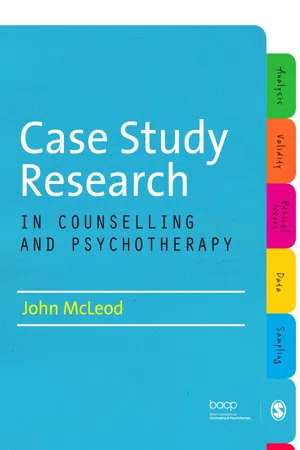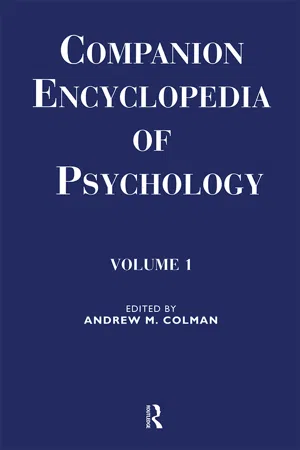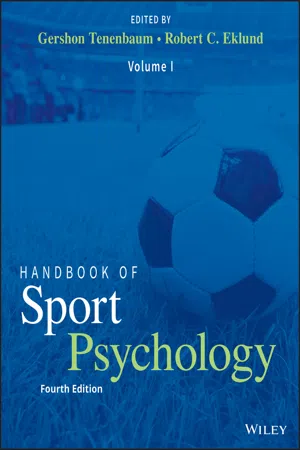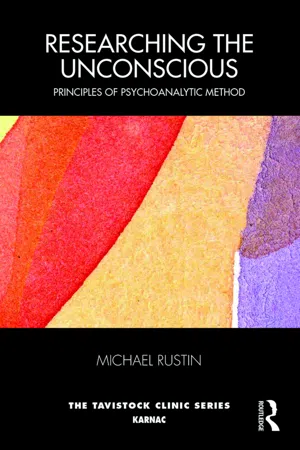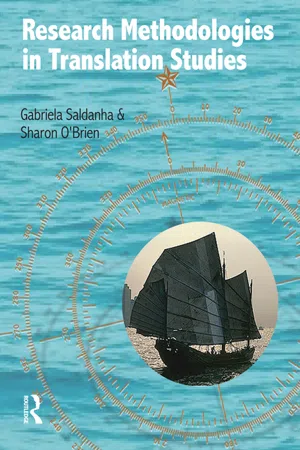Psychology
Case Studies Psychology
Case studies in psychology involve in-depth analysis of individual cases to understand behavior, mental processes, and psychological disorders. Researchers use various methods such as interviews, observations, and psychological tests to gather detailed information. These studies provide valuable insights into the complexities of human behavior and contribute to the development of psychological theories and interventions.
Written by Perlego with AI-assistance
6 Key excerpts on "Case Studies Psychology"
Learn about this page
Index pages curate the most relevant extracts from our library of academic textbooks. They’ve been created using an in-house natural language model (NLM), each adding context and meaning to key research topics.
- John McLeod(Author)
- 2010(Publication Date)
- SAGE Publications Ltd(Publisher)
complex processes. This feature of case study research in counselling and psychotherapy is clearly attractive and valuable to many researchers, since many readers of large-sample extensive studies bemoan the fact that these studies usually over-simplify what happens in therapy. On the other hand, complexity also presents a challenge or danger for researchers and research audiences – too much complexity can become chaotic and meaningless.Contextuality as an essential feature of case study research
A case study involves investigating an entity within its natural context. This approach can be compared with what happens in laboratory experiments or in analogue studies in counselling and psychotherapy, in which a controlled situation is created in order to make it possible to test hypotheses about cause–effect linkages. In surveys, large-scale naturalistic studies and randomized trials, the investigation may be based in a real-world context, but there is typically little information collected or reported about contextual factors. Yin (2009: 18) defines a case study as:…an empirical inquiry that investigates a contemporary phenomenon in depth and within its real-life context, especially when the boundaries between phenomenon and context are not clearly evident.The key idea here is that, in any intensive study of a specific case, the closer the ‘case’ is examined, the less certainty there is about the boundaries of the case, in terms of information that may be relevant to an understanding of the case. For example, in counselling and psychotherapy case study research, there often arise questions concerning the therapeutic impact of events and experiences that were not part of the actual therapy approach that was delivered. There are also many theoretically and practically interesting questions about when the case begins and ends (At the final therapy session? Six months following the final therapy session?). In analysing the factors that influenced outcome in a specific therapy case, it may become apparent that improvements in the client’s condition may have been due to getting a new job, or to conversations with the assistant who carried out research interviews. Because the aim is to arrive at a comprehensive understanding of a single case, by creating a rich data set, many of these ‘fuzzy boundary’ factors are observed and recorded, and become relevant in the analysis. By contrast, in studies with large numbers of participants, there is no scope for such factors to become part of the data set, or to play a role in analysis. In some therapy case studies, the researcher or author makes a specific effort to collect information about the context in which the therapy takes place. However, even when the researcher or author does not prioritise contextuality, the fact that there is more space in a case study to describe the client, the therapist, and therapy, means that readers are provided with a more in-depth understanding of the context of the case.- eBook - ePub
- (Author)
- 2020(Publication Date)
- Wiley(Publisher)
individual data, however, as opposed to grouped data and is limited by the inability of the researcher to manipulate variables.Case study research in psychology has three distinct qualities (Yin, 2014 ): making an in‐depth inquiry, studying conditions over time, and covering contextual conditions. This third quality, contextual conditions, is actually one of the strengths of this type of research. To fully understand the subject of study, you need to understand the contextual issues surrounding it. Consider the psychobiography. It is important to examine the friends, community, work, family, and cultural contexts in which this individual’s life is embedded. As you contemplate these real‐life concerns, they will not all fall into easy categories. This blurring of categories, and blurring between your subject and their world, is another strength of case study research (Yin, 2014 ) and may provide new insights that were never anticipated. The reasons psychologists use case study methods fall into three categories: description, explanation, and evaluation (Small Group Instructional Diagnosis would be a type of evaluative case study). When case study research is done correctly (using protocols, and triangulating data, and increasing reliability through use of databases and a chain of evidence) it is rigorous and demands a great deal of effort. Done correctly, it is a very powerful tool.To be exemplary, a case study must be well defined and avoid artificially controlled non‐ research constraints. If you do not have the time or money for this, limit your design from the outset. Be sure that your data collection process is complete. Continue to gather and analyze data until you reach a saturation point where new insights are no longer being identified.While analyzing data, rival explanations must be considered. The research must clearly show that all evidence was considered, not just the evidence that supported the initial point of view. At the same time, avoid allowing the pressure of the volume of data to try to make one’s case. Be clear on the validating steps taken, without belaboring the issue. One needs to be concise, parsimonious, and still entice the reader to continue reading. This takes talent, and numerous rewrites. If one can balance the skills of the scientist and - eBook - ePub
Companion Encyclopedia of Psychology
Volume One
- Andrew M. Colman(Author)
- 2018(Publication Date)
- Routledge(Publisher)
Psychology repudiates all attempts to divide its subject matter into watertight compartments, so some seepage between chapters and even between sections has been condoned in this encyclopedia, and unsurprisingly a section devoted to "special topics" turned out to be necessary because certain obviously important topics refused to fit into any of the other sections. Furthermore, research methods and statistics transcend the classification outlined in the previous paragraph, and it would be inappropriate to classify them as "special topics" because they could hardly be more general, but they are integral to the discipline and are taught in all reputable degree courses, so a further section in this encyclopedia is devoted to them. And for the sake of completeness, a final section deals with the professions of psychology.Research Methods
Research in psychology, as in any other science, always begins with a question that needs answering. The question may arise from the natural curiosity of the researcher, from a formal theory that generates a testable prediction, or from something puzzling thrown up by the findings of previous research. Provided that it relates to behaviour or mental experience and is an empirical question that can be tackled by collecting objective evidence, it is a legitimate problem for psychological research. What follows is a brief outline of the main research methods used in psychology (for a more extended discussion along the same lines, see Colman, 1988, chap. 4).Case studies
A case study is a relatively primitive research method. In psychology, it involves a detailed investigation of a single individual, or occasionally a single social organization. Research of this kind is common in abnormal psychology (see section 10) and comparatively rare in other branches of the discipline. The data reported in case studies may be derived from interviews, diaries, case histories, medical records, questionnaires and other psychometric tests, or direct observations of behaviour. The findings of case studies can be interesting and valuable, but they often suffer from problems of generalizability, because one individual's response to a particular treatment (for example) is not necessarily the same as another's. The accumulation of evidence from a number of case studies, especially if they are reported by independent investigators, can sometimes mitigate this problem. (For more detail on case studies, see chapter 12.5, Francis C. Dane.) - eBook - ePub
- Gershon Tenenbaum, Robert C. Eklund, Gershon Tenenbaum, Robert C. Eklund(Authors)
- 2020(Publication Date)
- Wiley(Publisher)
This chapter aims at developing a broader holistic understanding of case studies as they relate to sport and exercise psychology. The chapter clarifies the essence of case studies, beginning with defining the case study term. The chapter then considers the use of case study approaches more broadly in psychology, before explicitly outlining the differences that exist between professional practice and research case studies. Finally, the chapter explores the development of case studies for publication.Defining a Case
Before considering what the study of a specific case involves, it is imperative to clarify what a “case” refers to. At a broad level, a case has been described as a phenomenon specific in time and space. Miles and Huberman (1994 ) specifically described a case to be “a phenomenon of some sort occurring in a bounded context. The case is, in effect, your unit of analysis” (p. 25). Indeed, if utilizing a case study approach in a research context, the clarity of the case itself has been highlighted as being of paramount importance. As a result, clearly articulating the limits of the case are crucial. In support of this point, Stake (2000 ) highlighted that, “as a form of research, case studies are defined by interest in individual cases, not by the methods of inquiry used” (p. 445). Also, Johnsson (2003 ), in reviewing case study approaches in psychology, broadly suggested that a case study should have a “case” that is the object of study, and that is the starting point for the research. Specific criteria regarding the case include that it should be: (1) be a complex functioning unit, (2) be investigated in its natural context with a multitude of methods, and (3) be contemporary. An important aspect of determining the case is to identify boundaries regarding the scope of the case to ensure the evaluation remains focused. Indeed, Hodge and Sharp (2017 ) highlighted that a case study is about the boundedness of the case, and not just an in‐depth study. Building on this point, Yin (2009 ) stated that the criterion of boundedness is the key defining characteristic of a case study. The bounded nature of a case relates to (1) exclusive membership of a bounded group, (2) delineated location/place of existence, and (3) a delimited time frame (Hodge & Sharp, 2017 ). Both Yin (2014 ) and Stake (1995 ) suggested setting boundaries for a case to prevent “an explosion” from taking place in terms of the data collected. This bounding of the case could be achieved by (1) clearly determining the time and place (Hodge & Sharp, 2017 ), (2) Clarifying the time to be investigated and activities to be assessed (Stake, 1995 ), and (3) Clearly defining the context in which the case is being explored (Miles & Huberman, 1994 - eBook - ePub
Researching the Unconscious
Principles of Psychoanalytic Method
- Michael Rustin(Author)
- 2019(Publication Date)
- Routledge(Publisher)
In the human sciences case-study methods have tended to be adopted where particular entities or kinds are the object of research. Singularity or difference, when it is found, is often the outcome of a specific location in space and time. Geographical isolation of human communities has led to a kind of social speciation, parallel to the biological speciation of plants and animals. Some writers (Dawkins, 1976; Runciman, 2009) have proposed that “memes” are the carriers of cultural variations as genes are of biological ones. Human societies change their form over time, over generations, and now faster than this. It follows that generalizations about social phenomena are likely to be restricted in their scope of application. It may be reasonable to regard an entire phase of development of a social system as a “case”, because of its complex, distinctive, and interrelated features. Some social scientists contrast an early phase of capital accumulation of capitalist societies with a later phase of mass consumption, as “types” of social formation to which particular societies to a degree conform. It has been argued that Freud contributed to the emergence of the mass consumption phase of capitalism through his identification of the consequences of sexual repression (Gellner, 1995; Marcuse, 1958).Case-study methods have been significant in the social sciences. Ethnographers in anthropology and sociology, life-history researchers, organizational researchers, management scientists, and consultants all use case-study methods, even though their “cases” may be communities and institutions rather than individual subjects. There is a medical tradition of the clinical case study, seen, for example, in the work of psychiatrists and neuroscientists such A. R. Luria (1972), Oliver Sacks (1985), and Antonio Damasio (2000). Jurisprudence concerns itself centrally with “cases”. In the field of law, the application of general principles has always to be applied to particular instances—“cases”—where the relevance to them of this or that law has always to be determined by investigation and argument. An influential practice of legal education is based on the study of cases (Harvard Law School, 2018). The practical and ethical reason why attention should be given to “cases” in medicine and law is that individuals, and therefore “cases”, matter in their own right. Individuals receiving medical care, or being tried by the courts, are recognized as of value in themselves, and not only as instances of some larger category.Historical research implicitly uses case-study methods, even though its “cases” may be sequences of events that have occurred in specific places and times. Historical subjects can be described as “cases” since they are significantly different from one another and embody complex causal relations. They rarely conform exactly to theoretical types or general laws. While sociologists and economists seek to identify the theoretical “kinds” to which phenomena correspond, historians more often aim to produce exact descriptions of their objects of study, sometimes taking account of historical actors’ subjective experience of their place in their world.1 - eBook - ePub
- Gabriela Saldanha, Sharon O'Brien(Authors)
- 2014(Publication Date)
- Routledge(Publisher)
case study as “an empirical inquiry that investigates a contemporary phenomenon in depth and within its real-life context, especially when the boundaries between the phenomenon and context are not clearly evident” (2009:18). There are a number of overlapping characteristics in these two definitions, which suggests that what distinguishes this method from others are those aspects that make a ‘case’ a rather unique unit of investigation. Note the emphasis on contextualization and a real-life setting. It is these aspects that make the case study so appropriate for what we call context-oriented studies. The above definitions serve to differentiate the case study from other methods such as the experiment, where a phenomenon is studied under controlled conditions and deliberately divorced from its context so that attention can be focused on a few, clearly defined variables; and from textual analysis, where there is a clearer boundary between the object of enquiry and its context. Historical research, like case study research, exercises no control over the events it focuses on and also requires the examination of a wide range of sources (for a fuller discussion of researching translation history, see Pym 1998). Both Yin and Gillham make a clear point of restricting case studies to contemporary events, and Yin suggests that this is the main distinction between historical and case study research. According to Yin, historical research is the obvious choice when events are in “the ‘dead’ past – that is, when no relevant persons are alive to report, even retrospectively, what occurred, and when an investigator must rely on primary documents, secondary documents, and cultural and physical artefacts as the main sources of evidence” (2009:11). The case study, on the other hand, has access to techniques such as direct observation and systematic interviewing which are not available in historical research. However, here we take a different view from Yin and Gillham, in that we see no reason why the case study cannot be used in studying historical phenomena and be considered a method within the broader field of historical research. Two of the studies used here for illustrative purposes, Susam-Sarajeva (2006) and Sturge (2004), focus on historical events.As we will see below, a crucial step in designing a case study is to establish boundaries to the unit of analysis, i.e. the case. This need underlies a key aspect of the definition of ‘case’: it should be a real-life phenomenon, not an abstraction such as a topic, an argument, or a hypothesis (Yin 2009:32). On the basis of the above definitions we can establish that a case can be anything from an individual person (translator, interpreter, author) or text (note that text fragments cannot be cases because of the requirement of contextualization), to a whole organization, such as a training institution or a translation agency, and even a literary system. A case can also be a process or an event. For example, a case study may look at the process of training, in whichever way you want to delimit that process, for example, from the moment a student is registered on a translator training course to the moment where they enter the job market. An event can be a particular historical moment, the onset of a war, the election of a president, a change in legislation, all of which will trigger a series of translations or a change in translation policy. It should be noted, however, that a case study also requires some form of conceptual structure. We cannot choose an institution or an event as the aim
